H-E-B: Partnering For Success
May 13, 2011 | 18 min to read
H-E-B’s strong connections to its Texan and Mexican communities enhance its sustainability goals and provide a competitive edge. Recently recognized with a sustainability award, H-E-B’s leadership credited its 76,000 employee “Partners,” diverse suppliers, and relationships with local farmers as critical to its success. The company also actively supports various charities and appeals to ethnically diverse consumers, fostering a notable sense of loyalty reflected in the phrase “My H-E-B,” which underscores its partnership mentality.
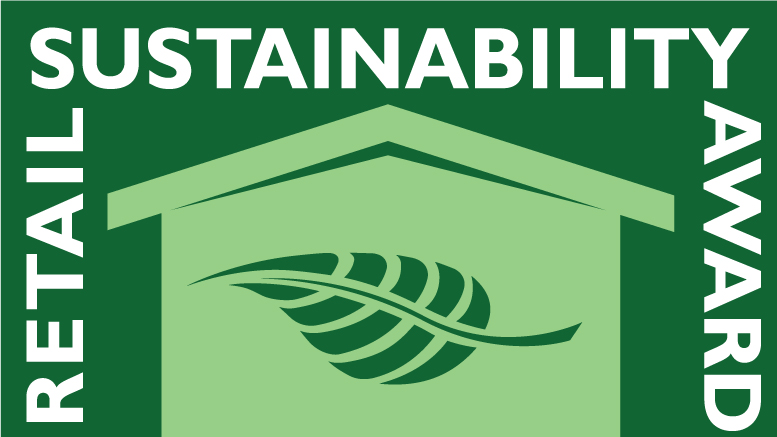
H-E-Bs familial tie to its Texan and Mexican communities bolsters its sustainability goals and provides a competitive edge.
When PRODUCE BUSINESS presented its annual sustainability award to H-E-Bs leadership team, the executives insisted others within the organization are more deserving and the recognition was misplaced. Family-owned and ever loyal to its Texan roots for more than a century, the company operates under a bold collaborative philosophy.
In its drive to grow its sustainability platform and commandeer greater market share in its established, yet competitive home turf, H-E-B stakes its success on a wide-range of players:
76,000 employee Partners, many accruing tenures spanning 20 to 30 years and beyond
Minority companies H-E-B engages and enables through its supplier diversity program
Long-term relationships nurtured with small to mid-size local farmers
Numerous charitable organizations H- E-B actively supports in giving back to the communities
Ethnically varied consumers, who have developed an unusual affinity for H-E-Bs customized approach. My H-E-B is a common phrase shoppers in H-E-B territory proudly use to reference the store closest to them, entertaining their connection to the partnership mentality.
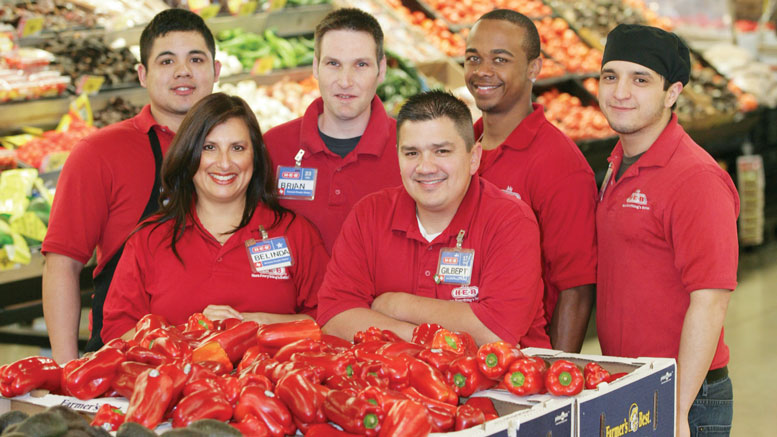
One of the largest independently owned retailers, the 330-plus-store chain reaches some 6 million customers per week in 150 communities purposely concentrated solely in Texas and neighboring Mexico. H-E-B banners include Central Market, H-E-B Plus!, Mi Tienda and Joe Vs.
As a privately held company, H-E-B is unfettered by the pressures of producing short-term gains to appease stockholders. The company capitalizes on its flexibility to experiment with emerging technologies, take risks and innovate in all realms of the sustainability puzzle. For H-E-B, the strategy is a give-and-take of guiding and being guided to balance the mosaic of people, profits and planet a challenge its many partners welcome.
Produce: The Common Thread
H-E-Bs sustainability principles plant produce at the core. Fresh produce, in many ways, defines H-E-Bs identity, according to Susan Ghertner, director of environmental affairs. Produce is who we are, she says, pointing out that fresh, local and sustainable were driving principles at the company years before the concepts became fashionable.
H-E-B promotes its mission to offer consumers an abundance of high quality, fresh fruits and vegetables tailored to their needs, which threads into its sustainability strategies: bolstering local farmers, connecting and giving back to the community and keeping it in Texas and Mexico.
Targeted For The Long-Term
What are the roots that differentiate H-E-B from others and enable it to do the things it does so well? Two notable factors spring out: the first is being privately held, the second is its unique position as the only retailer of its scale and size to operate exclusively in one state and across the border in Mexico. Its familial tie to its Texan communities bolsters its sustainability goals and provides a competitive edge.
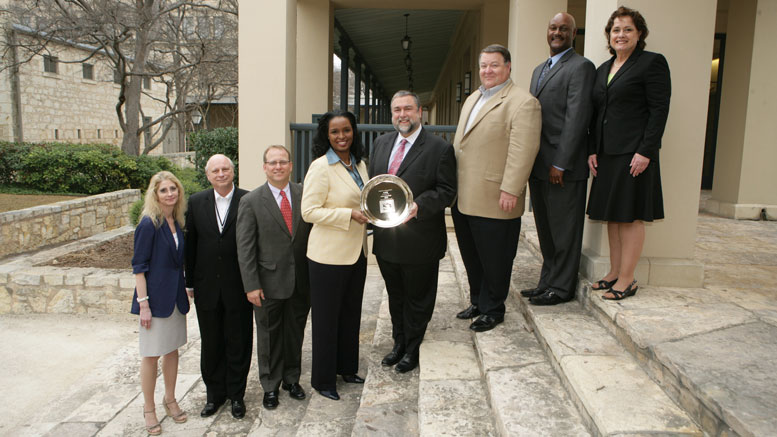
One of the primary features of our company is the long view, and that supports our partners; it supports our stronger business case to be sustainable as a business model, and it supports the community, says Hugh Topper, group vice president of fresh procurement and merchandising.
This attitude extends toward dealings with suppliers. There has been a lot of change among many retailers in the way they procure in the produce industry, reacting short-term to the tremendous pressure to finagle the most competitive price. These fleeting deals raise concerns about the long-term vitality of the produce industry, as growers need to have the financial where-withal and confidence to reinvest and expand their facilities, while modernizing to keep up with the latest food safety and production techniques.
One of the primary features of our company is the long view, and that supports our partners; it supports our stronger business model and it supports the community.
Hugh Topper, Group vice president of fresh procurement and merchandising
When we are working with suppliers today, we have conversations about needing them as much as they need us, says Topper, adding, H-E-B recognized that years and years ago before I joined the company that we want to have great relationships with growers and farmers.
From the beginning, there have been local growers that H-E-B has helped finance to get their businesses started, Topper notes. We have conversations with growers about what we might be doing that has a negative impact on their business and they give us open honest feedback, he says. There are areas where H-E-B can make changes and sometimes areas where it cannot because of the need to stay competitive in the marketplace, but having an open conversation with suppliers about what is driving cost in their business and things that they want to do to be sustainable within their organization and understanding how we can support that has been a strong goal of ours, he emphasizes.
Small farmers are not always well capitalized; it could be risky for them to plant 20 acres of okra because if they do not have a home for that product, they are going to be in big trouble. In certain instances, we have strategic partner relationships where we say, If you grow X crop for us, we will take 100 percent of your capacity, says Topper. I get to work with growers and farmers and be a part of that lifestyle, and I love the freshness of that, he says, noting how he draws from his strong agricultural roots and 29 years in the produce business, including almost 19 years at H-E-B.
We sit down with these local suppliers and talk about their crops and the various yields coming in. They even give us granular information: We are planning to rotate the crops and get nutrients back to the soil. So that actually does take place, but there are safeguards, and we cannot over-promise to everyone, says Topper.
In some of the localized markets, we have regional produce buyers who really work with small suppliers to build relationships, says Topper. They do the forecasting and they sensitize the stores that when growers show up at their backdoor, they are welcome as family members, and for the most part, stores already know them. They go to school with their kids, they sing in the choir together. If they have a pallet or a truckload, they can go to the backdoor. Certainly it does not make sense to drive it all the way to one of our distribution sites in San Antonio or Houston and turn around and ship it back out for small quantities. But if they are moving in a truckload, those opportunities do exist.
Embracing Diversity
H-E-Bs supplier diversity program in its simplest form is really enabling small and minority companies to engage in contractual business or service relationships with H-E-B, preferably locally, explains James Harris, director of supplier diversity. Ninety percent is done with Texans because we are a Texas-based company, and over 50 percent of that is actually done with women, he says, pointing out that H-E-B was founded in 1905 by a woman, Florence Butt.
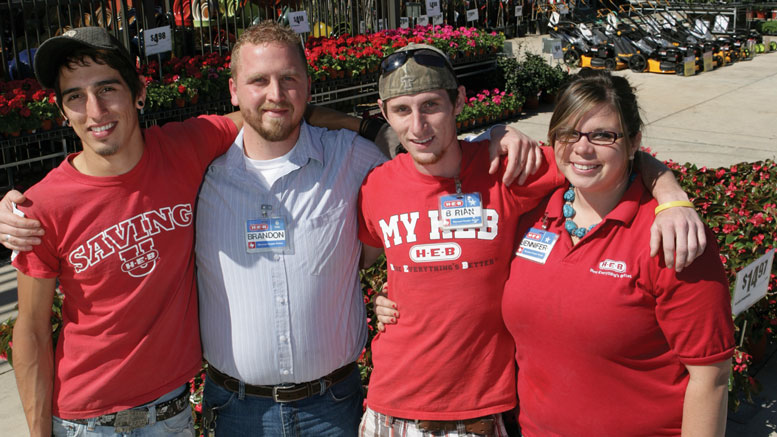
Often, small vendors confront barriers breaking into a larger chain, such as burdensome financial requirements including millions of dollars in liability insurance. We lower those barriers and even the playing field, says Harris. We do require certificates of insurance, but the policy is not that exorbitant. As long as they follow good agricultural practices, we end up being in a very good place.
A strong educational outreach effort opens communication between H-E-B and potential suppliers and those farmer-partners wanting to reach new plateaus. We provide them that opportunity to get in front of the decision-makers and the buyer, and we make sure they complete all the paperwork and are ready to do business, Harris continues.
Our reward is that we can create opportunity for a company to do business with H- E-B, and that partnership can really change their life and their familys life, and those in their surrounding neighborhoods, adds Harris. These changes fuse back into the communities that we serve. So it is full circle.
H- E-Bs minority business outreach involves a robust partnership with the Texas Department of Agriculture and its extension offices in five different regions throughout the state. Harris rolls up his sleeves and hits farms across the state with a guy he and local farmers affectionately call Big Mac, who, in more formal circles, is known as Edward McGowan, marketing specialist at the Austin-based Texas Department of Agriculture.
He is about 64 or 65, 280 pounds and knows every farmer around. He actually goes out pitching to farmers on what crops to plant based upon what is indigenous to the area and when to actually plant it, describes Harris. When we do those local outreaches, I call Big Mac and say, Lets go on the road; lets do a road show.
According to McGowan, who is stationed in Houston, when H-E-B is buying local, it is boosting economic development, creating jobs, bringing product and people in and helping the community. Im not supposed to be biased, but H-E-B thinks along those lines. I have a special place in my heart speaking on behalf of James and his work at H-E-B, admits McGowan.
When producers grow for a chain store, a better deal from Florida can come in and that retailer will drop them, McGowan continues, but H-E-B, and people like James look out for the local farmers and will find a place for them. James will make sure it happens.
Empowering Local Farmers
One only needs to speak with local growers working with H-E-B to grasp the depth of the chains commitment to the environment and overall corporate social responsibility. [To respect proprietary relationships, growers identities have been protected.] In my history in the produce world, Ive been with a lot of different chains, including WalMart, and nobody is better than H-E-B in supporting the local grower, says one local farmer in the Winter Garden area, who has significantly expanded his business and prospered by partnering with H-E-B for 14 years.
One only needs to speak with local growers working with H-E-B to grasp the depth of the chains commitment to the environment and overall corporate social responsibility.
H-E-B helped guide the cabbage and onion shipper to branch out into growing other products to fill voids in the chains local assortment. Were a family business started by my grandfather, says the farmer. Were not the farmer with 20 acres and a pick-up truck delivering to H-E-B, which the chain also welcomes, and were not the size of Fresh Express in California. We do about 4,000 acres of produce a year, he says.
H-E-B is very good at being loyal, he continues. A lot of chain stores will leave you for weather or quality issues until next season. H-E-B understands that, and as soon as youre ready, theyll come back to you, he says, adding, They dont try to beat up the local farmers with pricing because they want long-term relationships and know they have to support us over time to keep us in business.
Another grower who supplies a variety of vegetables to H-E-B from various regions south and west of San Antonio, agrees. In the farming business many generations, the grower started his deal with H-E-B about 11 years ago. We grow for a couple of chain stores, but H-E-B is our baby, he says. We can count on them and they can count on us. I began with almost nothing, just over 20 acres, and now have at least a couple thousand acres exclusively for H-E-B, he says proudly.
HEB is No. 1 to me, and really cares. The team works very well with us on supply issues. At Easter time, will we be good on green beans? they will ask us. The buyers really understand weather issues and ask us to let them know if it looks like were getting into a gap, so they can turn to Florida or other places to fill in supply, he continues.
While other chains get bogged down in layers of bureaucracy, H-E-B can react on a dime. All they ask for is three- or four-days notice. Thats where H-E-B whips everybodys butt. H-E-B can react in 24 hours, where the big chain stores have to go through five different people, says the grower, who keeps exclusive acreage for H-E-B, knowing that the chain will remain good on its word and help him out in challenging times.
If I have oversupply, I call the corn buyer, Im in trouble Im going to have 15,000 boxes of corn staring me in the face in a week. The buyer reassures me, Just keep me informed and well run a 40-store ad and clean your corn up. No other chain store can do that. It takes two weeks to get an answer back from the other guys, he emphasizes.
H-E-B was having a shortage of local products in certain categories. It went to the Winter Garden shipper and asked if he would be willing to work with H-E-B in building a broader assortment. We wouldnt have several product lines if not for H-E-B, and a big portion of those go to the chain and support the local deal. In times where we have good supply and weather cooperates, well supply 75 percent of their needs on that item. We know H-E-B will be there to buy 60 or 70 percent of those items so we dont have to worry about our livelihood. We dont have to try and sell to other places when we are over, he says. I can pick up a phone if I have different items, or a local farm near me has something else, and the buyer at H-E-B will try it and support the buyer at the local community.
Even if H-E-B has to pay the farmer more, theyll do it to support the deal, according to the Winter Garden farmer. From advertising and promotions to working with individual stores on special merchandising programs that may include a visit by the grower, H-E-B makes a point this product comes from a local farm, he explains.
H-E-B does a lot locally, not just for sales, but also shows the community who these farmers are and helps consumers understand the whole supply chain and the growing issues we face. Consumers see produce has a place in this area from a labor standpoint, a water standpoint and an environmental protection standpoint.
As far as food safety is concerned, H-E-B has instituted a comprehensive program. From the start of our relationship, says the Winter Garden grower, they came to our facility, testing critical control points and working with us, and from there it evolved into a whole system. To be an H-E-B supplier, you need to be certified and get third-party audits. You also must go through an educational food safety training program specific to H-E-B, which includes Best Practices for food safety and sustainability long-term for our area. The grower describes his experience: With other chains, its my way or the highway, but H-E-B takes more of an educational approach and works with local growers to get them up to speed.
We were already doing these food safety requirements, but some of the small growers learn from H-E-B what needs to be done. They guide you, says the south/west San Antonio grower. When youre a little local farmer, you get nervous when you get a call from Hugh Topper, but fortunately, Ive always been recognized for a job well done.
In Your Backyard
Locally grown also extends to H-E-Bs outdoor garden section, called Texas Backyard, a unique subsection of the supermarket that features many plants and foliage items grown in Texas.
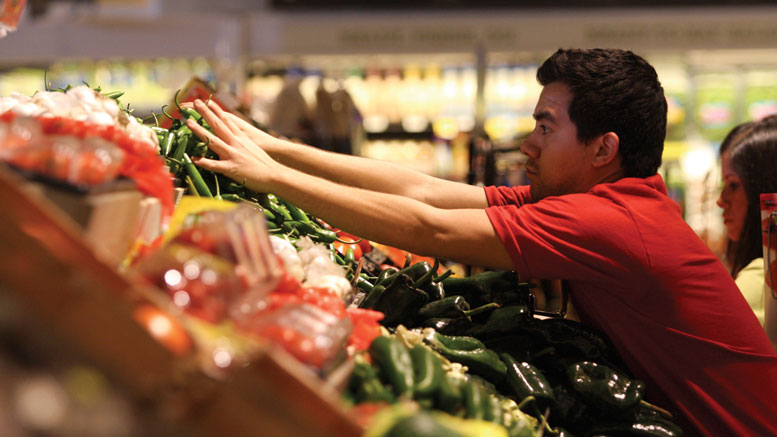
Weve Got Texas Roots, displayed on a prominent welcoming sign, parlays a familiar H-E-B theme, figuratively and literally. The concept maximizes specialized knowledge of the Texan terrain, highlighting unusual plant varieties and informing customers on how to care for them.
According to Brandon Janes, manager of the Texas Backyard at the HEB Plus! store located at Stone Ridge Market in San Antonio, Product has to be native and hardy to survive that strong Texas sun and 100-degree heat, he says, noting the advantage of cultivating relationships with growers in the area.
Employee Partners
The concept of locally grown is equally important to H-E-Bs internal operations as it is to its external suppliers. Partners mirror the makeup of the community. This commitment to hiring flows through the company. We make a conscious effort to have partners reflective of and connected to the diverse markets in which we compete, says Harris.
The other hat Harris wears is the diversity hat, and that is focusing on the workforce and marketplace. If you have people in management and in the store who understand the culture and speak the language, it breaks down barriers and enhances the shopping experience, he explains.
You have to know your market, or it comes off disingenuous, continues Harris. We have 11 diversity counselors strategically placed in all of our regional markets to educate partners on product handling and drive awareness upward on cultural nuances so we do not offend anyone, he says, adding, We also do diversity training. It does not mean you are able to teach diversity, but that you have a working under-standing of what it means so if someone wants to engage in a diversity conversation, you do not have to run away from them; you can actually embrace it, and it puts everybody in a more comfortable position.
Partner Empowerment
H-E-B empowers its employee partners through incentivized health and wellness programs, as well as innovative educational/leadership classes that create an energetic work ethic but also a more balanced, happier life, according to Leslie Sweet, public affairs director for the Central Texas region.
Partners actively participate in sustain-ability initiatives and devote hours of their weekends volunteering in charitable community events, adds Sweet. We have personal conversations with our partners for every dollar donated. This way, H-E-B allows store partners to take charge of funding to support charities that are dear to them. At the same time, H-E-B is diligent to vet the organizations to ensure the charities are solvent and above board with their services, Sweet assures. For example, We have a partner with an autistic child, and she was organizing a walk for Autism. H-E-B lent financial support and resources for the event, and the effort motivated 40 more partners to join the walk, stimulating awareness to help the cause, while creating new collaborative friendships.
Our partners have their fingers on the pulse of folks in Texas, says Winell Herron, group vice president of public affairs, diversity and environmental affairs. We have corporate initiatives that run across all of our stores. We have regional community outreach initiatives that are focused on particular market areas and then we have very targeted grass roots initiatives store-by-store, looking at what matters to our partners and what people care about in their community, says Herron, adding, Its not just about writing a big corporate check.
H-E-B builds a powerful synergy between its partners, suppliers, customers and the community, the foundation for award-winning sustainability.
RECYCLING BUY-IN
Any major green initiative requires top leadership support, but to really gain momentum, you have to have the bottom-up groundswell and take a very grass-roots approach, according to Winell Herron, group vice president of public affairs, diversity and environmental affairs.
To generate passion at the store level for recycling initiatives, H-E-B is formalizing a program to identify a green champion for each store, not only to communicate and educate partners on internal strategies, but to elicit partner ideas, feed-back and spawn a surge of support at the local level.
Cross-disciplinary sustainability teams function very closely together on any project the chain undertakes to make it happen, explains Susan Ghertner, director of environmental affairs. If its composting, we have leaders from produce, from the stores, from procurement, from environmental affairs, and then also whats critical, getting store partners involved.
With the economic volatility of the last few years, we have really put the pedal to the metal on recycling, minimizing waste and our impact on the environment because its smart, not only because its the right thing to do, says Herron. But from a business standpoint, it generates revenue for our company and gives a great return on investment.
H-E-Bs early embrace of Returnable Plastic Containers (RPCs) depended on its broad, interdisciplinary cost/benefit analysis, as well as visionary thinking, according to Bill Reynolds, group vice president of facility alliance. When RPCs first started moving forward in the industry, everybody looked at this as a cost. But we looked at packing product in an RPC versus a corrugated box, functioning better in the cooling system, generating less trash, spending less labor hours going back to the compactor, and now Im able to keep more of our partners in the produce department.
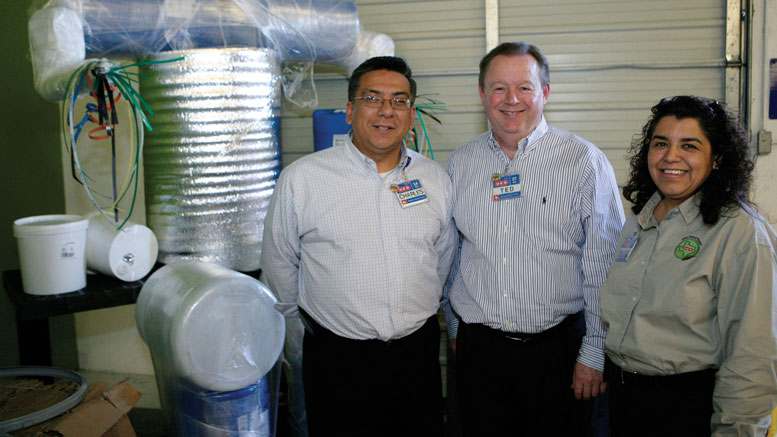
Another eye-opener was our ability to reduce shrink. Getting buy-in from suppliers required showing them what could happen to their product after spending all this loving care to grow it, he explains.
RPCs get cleaned and reconditioned next door to H-E-Bs bustling, centralized recycling facility, also known as the Reverse Logistics facility, where the motto, We Do Everything Backwards, written on its front door, celebrates the task of taking products back to their beginnings.
Last years recycling numbers tell the story: H-E-B recycled over 303 million pounds of materials in 2010, according to Ghertner. Total recyclables have increased by 11.5 percent compared to 2009, and we continue to add more commodities each year, she says.
Produce recycling is big, says Maggie Hernandez, environmental project leader. Every produce pallet has a corner on it, and composites are not good for recycling, she says. Her plea to the produce industry is to redesign pallets to eliminate composite materials that are not environmentally friendly.
Store Level Sustainability
Where no two stores are alike, My H-E-B is not just a slogan.
Continually adjusting to demographic shifts, H-E-B focuses on highly tailored product assortment and how each store is designed and merchandised. H-E-B frowns on a peanut butter approach, says James Harris, director of supplier diversity.
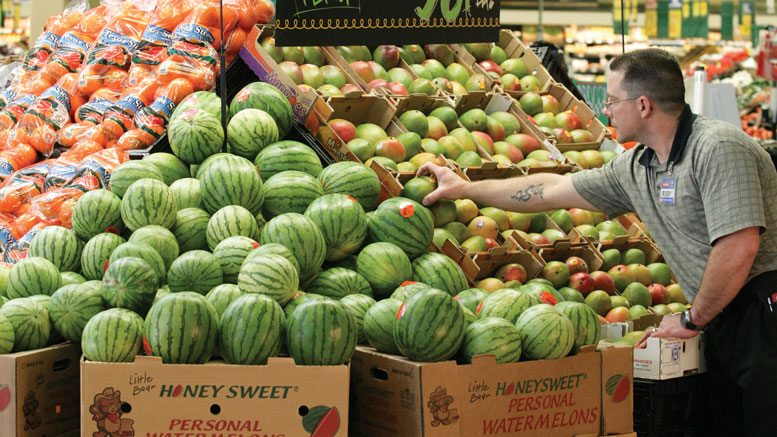
There is a tendency over the years for large chains to put in stores that are really the same no matter where you go, says Bill Reynolds, H-E-Bs group vice president of facility alliance. There is a value there on economies of scale, but it does not really fit each and every neighborhood.
At HEB, no two stores are the same; in fact you will see very different looking stores, from the physical presence to customized formatting and assortments depending upon the demographics. Merchants tailor the store so that everything is customer- and community-centric. I think we have a real strength there, says Reynolds, adding, I work with Hugh Topper and the team on layout Produce is our calling card. We have it upfront to make a first impression, and it also has to have flexibility to adapt to seasonal and product changes and set the tone for the customers of that shop.
Adds Hugh Topper, group vice president of fresh procurement and merchandising, One of our mottos is, We buy Texas first, so we work hard with large to mid-size to small growers to deliver. First and foremost is getting everyone aligned with our strategy on what we want to accomplish from a merchandising perspective.
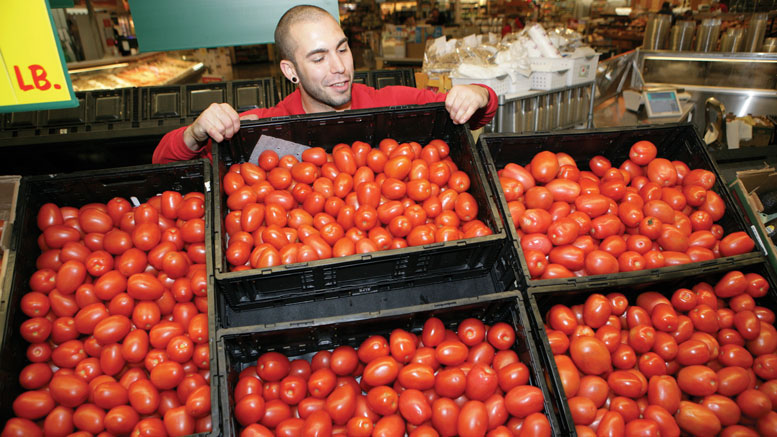
While walking through two LEED-certified stores in San Antonio, it becomes obvious that partner input is an integral part of the sustainability movement. One clever merchandising idea epitomizes a multi-faceted solution that marries people, profits and planet. As a starting point, many produce displays use Returnable Plastic Containers (RPCs), notable in itself, as H-E-B was a pioneer of RPCs one of the early adopters on a chain-wide basis when there was a lot of industry resistance.

